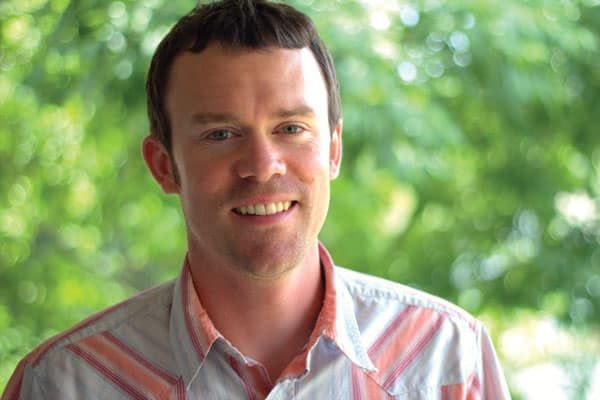Conservation offers a low to no-cost fix to water woes

Perhaps Santa Claus has the same knack for real estate that he has for delivering billions of toys in a single night. Although he must have a sizable heating bill in the frigid North Pole, melting icebergs nearby provide plenty of water for his workshop.
Unless we want to wait on Santa to deliver some of that water, we had better get moving on implementing our own water supply programs.
Down here in Colorado, our water supply and demand problems were addressed in a two-year study released on Dec. 12 to mixed reviews. The “Colorado River Basin Water Demand and Supply Study” (Basin Study), produced by the Bureau of Reclamation, is an outline of the supply and demand problems facing our region over the next 50 years.
SPONSORED CONTENT
The good news is that we can start to solve our pending problems immediately, at virtually no cost to businesses, taxpayers, ratepayers, governments or water providers.
In fact, conservation and efficiency programs can be implemented within months, if not weeks. Western Resource Advocates has long pushed for specific, measurable conservation and efficiency programs because of the speed in which they can be put into practice (as opposed to 30+ years for a water pipeline); the relatively low cost (many large infrastructure programs carry 10 zeros after the dollar sign); and because efficiency programs get to the heart of our supply and demand problem (we’re using water at a rate that cannot be sustained alongside projected population growth).
The Basin Study’s findings were sobering, though not unexpected. Population growth in the West is expected to increase by 50 percent over the next 50 years. Climate change is expected to cause Colorado River flows to decline by nearly 10 percent. With some 35 million people who rely on water from the Colorado River already, you don’t need a calculator to come to the conclusion that we need to act quickly to ensure adequate future water supplies.
Projects such as pipelines, desalinization plants and large reservoirs require months and years of discussion — so much deliberation that you might rightly label the discussion itself as a “water project.” But population growth can’t be placed on hold until such discussions reach a conclusion. The Colorado Basin states can’t delay the inevitable. No doubt the Bureau of Reclamation had this in mind when it specifically noted that water conservation and re-use programs should be the focus of “significant additional efforts.”
Some water providers will continue to insist that the best solution to meeting future water needs is to spend tremendous amounts of money on infrastructure projects, but that ignores the true problem of water availability as well as reality. Building pipelines or large storage facilities isn’t feasible. Or as Interior Secretary Ken Salazar said, “There are water import solutions that are impractical from a political and technically-feasible point of view.”
We’ve seen the results of the Basin Study, and it’s time to act. Let’s focus on what we can accomplish today with conservation and efficiency programs. For example, local or state governments in the Colorado Basin could mandate in early 2013 that all new residential developments must be built with high-efficiency showerheads, faucets and toilets. Many of these fixtures are priced in the same range as standard fixtures, so there would be no additional costs for homebuilders who need to buy fixtures one way or the other. None of these costs would be passed on to consumers or taxpayers, either.
High-efficiency fixtures can cut indoor water use by 50 percent compared to current use, and the water savings add up quickly. If 300,000 new homes were built with such fixtures, that would save enough water to meet the needs of 60,000 people — all at no additional cost to governments, developers, taxpayers or ratepayers.
This is just one example of a conservation program that could be implemented swiftly. There are many other possibilities for new commercial and industrial buildings as well as for outdoor water efficiency.
Obviously we aren’t going to solve our future water supply and demand problems overnight, but the longer we delay in enacting conservation and efficiency measures, the harder it will be to catch up to demand.
After two years of intense study and debate, it’s time to get to work on putting realistic conservation and efficiency plans into action.
Drew Beckwith is the water policy manager at Western Resource Advocates. He can be reached at 720-763-3726 or drew.beckwith@westernresources.org.
Perhaps Santa Claus has the same knack for real estate that he has for delivering billions of toys in a single night. Although he must have a sizable heating bill in the frigid North Pole, melting icebergs nearby provide plenty of water for his workshop.
Unless we want to wait on Santa to deliver some of that water, we had better get moving on implementing our own water supply programs.
Down here in Colorado, our water supply and demand problems were addressed in a two-year study released on Dec. 12 to mixed reviews. The “Colorado River Basin Water Demand and Supply Study”…
THIS ARTICLE IS FOR SUBSCRIBERS ONLY
Continue reading for less than $3 per week!
Get a month of award-winning local business news, trends and insights
Access award-winning content today!
